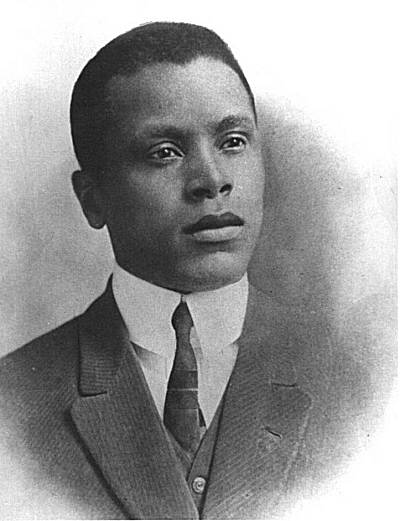I continue getting political with my scholarship this week as I discuss and destroy The Canon.

What is “The Canon”?
The term is derived from Greek which creates the word-image of a rule as in both a law and a ruler (you know, the stick by which we measure stuff). Applied to film and literature, it is the set of standard works we all use for conversation. Also, the canon standardizes some sense of quality by which we evaluate films.
The canon is of course massively problematic. Scholars from T.S. Eliot to Cornell West have discussed this quite a bit for the last several decades. Recent events make a re-evaluation of the canon that much more important.
Why, you ask? Certainly Trump’s election is more complex than all the simplified drivel that is clogging our social media feeds, but there is an extent to which the racist element is highly significant. Furthermore, we are talking about a reactionary move in which the voices of specific minority communities are silenced by the rhetoric that “there is no ______ America.” The blank stands for black, gay, hispanic, etc. The fundamental move here minimizes the fact that different communities experience America differently. The speech in the link suggests that an African American has exactly the same experience with law enforcement as a white American. This silencing is also there to prevent white male voices from feeling guilty about their privilege.
“The Canon is overwhelmingly white and male.”
The canon is a good thing insofar as it provides some high points around which we can talk about film. Have you ever wanted to talk about a movie that no one has seen? That’s the worst. The canon helps by requiring a base knowledge for conversation, so it is, to a degree, necessary. However, the canon is overwhelmingly white and male. The voices of women and minorities are routinely ghettoized to speciality studies in cinema (African American, Queer, etc.). This normalizes the white and male and renders the others as aberrations.
This is a problem, folks. There is no easy way to deal with it because the white and male have been the movies we in the field have been watching and are therefore the only ones we have to talk about, since they are the shared texts of the conversation so far.
What if we did Intro to Film Studies differently? What if we, as scholars, prioritized a base of films that privileges minority voices? Some of us are doing this already. Here’s another idea: what if cinephiles agreed to watch a set of films by minority voices and began to use them as the privileged examples of the major headings in film studies? It could make attempts to silence these voices unthinkable.
And it might look something like this:
Early Cinema: Alice Guy-Blanché

Cinema was invented between 1895 and 1896 (there’s some debate) and it took all way until 1896 for a female filmmaker to appear. (I know, I know…) Not only that, Alice Guy-Blanché directed the very first narrative film ever. If there is a name that belongs in the canon, it’s hers. I think we should be talking about her at least as much as Edison and the Lumiere Brothers. Here’s the first film that told a story, and yeah, a lady made it.
Avant-Garde Film: Germaine Dulac and Maya Deren
Sure, we usually talk about Buñuel and Epstein in this section as the typical canon representatives, but why not Germaine Dulac. Not only was she a filmmaker at the forefront of both Surrealist and French Impressionist film, but she was also a hard working feminist and political activist. My favorite Dulac film is The Seashell and the Clergyman. Additionally, Maya Deren is also one of the most important founders of American avant-garde film and she paved the way for New American Cinema (not to be confused with New Hollywood). Her masterpiece in my opinion is Meshes of the Afternoon.
The Silent/Sound Transition: Oscar Micheaux

Every heard of this guy? I bet you haven’t. Micheaux is the most successful African American filmmaker of the first half of the 20th Century. Everyone talks about DW Griffith and his hyper-racist Birth of a Nation. Griffith is the example when we talk about the development of a Hollywood style and system. But, Micheaux was every bit the showman that Griffith ever was and his films about race relations in the Teens and Twenties provide an important counterpoint to Griffith. Sadly, history has lost most of his films, but here’s one you can watch right now.
Classical Hollywood Cinema: Ida Lupino
With Ida Lupino you’ve got it all—she was an actress before she was a filmmaker so we can explore both star studies and the auteurism of commerce. She directed a film noir for genre studies and she was one of a very elite group of women who directed under the Hollywood Studio System. Finally, she is one of the few directors of any gender to make the television transition. She worked quite a bit on The Twilight Zone. For my money, Lupino is one of the real tragedies of the canon. There’s really no reason why we don’t talk about her a whole lot more.
Italian Neo-Realism: Pierre Paolo Passolini

Yes, Virginia, there is a gay, Marxist, Italian, Catholic, neo-realist filmmaker and he is freaking amazing! Rather than the other greats such as De Sica or Rossellini, let’s watch films by a guy who does all of the things that Neo-Realism does in my two favorite films from him: Mamma Roma and The Gospel According to St. Matthew.
Stay tuned, there’s more! Next week we will shake up the canon from the end of the 20th century and into the 21st century.
Dustin Sells is studying for a PhD in Screen Studies at Oklahoma State University. Sometimes he gets some sleep. Check out Dustin’s most recently viewed films on Letterboxd @DustinSells or follow him on Twitter @dustin_sells or follow him on Twitter





